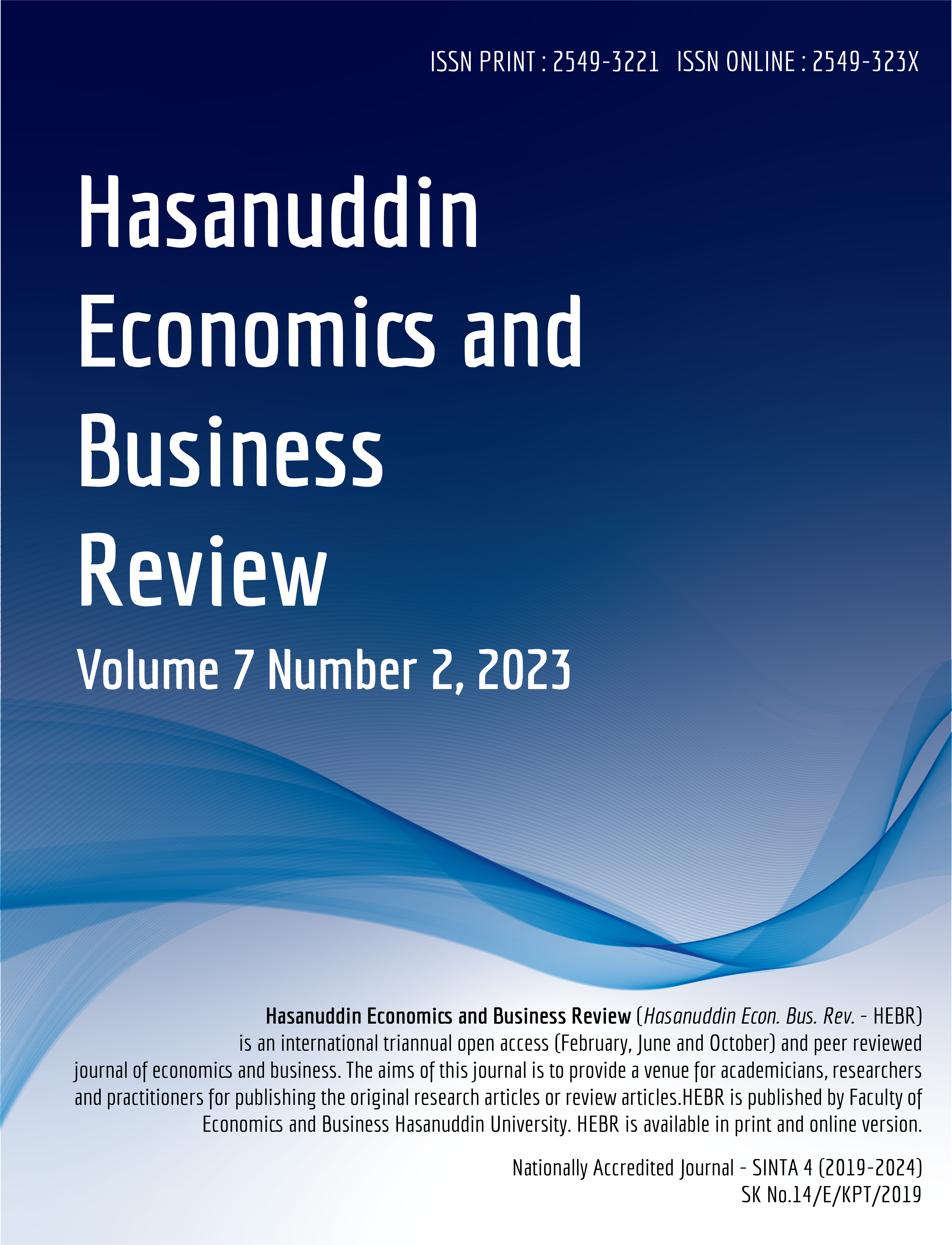Abstract
This study analyzes the competitiveness and market penetration of the leading export commodities of South Sulawesi. The Klassen typology and Export Product Dynamic method used to map the leading export commodities based on the competitiveness, market penetration power, and export dynamic of each commodity. This study focuses on measuring competitiveness and market penetration of each leading export commodity by using the "Revealed Comparative Advantage" and "Index of Export Market Penetration" indicators.
This study also aims to analyze the determinants of competitiveness and market penetration of these leading export commodities, as well as their ability to encourage increased economic prosperity and create an effective and harmonious business environment in South Sulawesi.
This study found that are Nickel, Lac, Fish, and Cocoa are leading export commodities of South Sulawesi which have very strong competitiveness and high market penetration. Meanwhile, the leading export commodities of South Sulawesi which have very strong competitiveness but moderate market penetration are Salt, then commodities have strong competitiveness and moderate market penetration are Coffee, Preparations of Meat and Fish, and Residues from food industries. Furthermore, Fruits; Oil Seeds; and Sugars are commodity that have strong competitiveness but low market penetration. There are six commodities in rising star position and five commodities in a loss opportunity position.
References
Ahuja, R. (2020). Revealed Comparative Advantages : A Study of India and ASEAN Economies.
Bano, S., & Scrimgeour, F. (2012). The Export Growth and Revealed Comparative Advantage of the New Zealand Kiwifruit Industry. International Business Research, Vol. 5, 73-82. doi:doi:10.5539/ibr.v5n2p73
Batra, A., & Khan, Z. (2005). Revealed Comparative Advantage: An Analysis For India and China. New Delhi : Indian Council For Research On International Economic Relations.
Bhattacharyya, R. (2012). Revealed Comparative Advantage and Competitiveness: A Case Study For India In Horticultural Products. Journal Of European Economy, 22-37.
Gallardo, J. L. (2005). Comparative Advantage, Economic Growth, And Free Trade. 313-335.
Matsuyama, K. (1992). Agricultural Productivity, Comparative Advantage, and Economic Growth. Journal of Economic Theory, 317-334.
Riaz, B. (n.d.). Comparative Advantage, Exports and Economic Growth. 1-64.
Serin, V., & Civan, A. (2008). Revealed Comparative Advantage and Competitiveness: A Case Study for Turkey towards the EU. Journal of Economic and Social Research, 25-41.
Seyoum, B. (2007). Revealed comparative advantage and competitiveness in services. Journal of Economic Studies, Vol.34, No.5. doi:DOI 10.1108/01443580710823194
Sheng, Y., & Song, L. (2008). Comparative Advantage And Australia-China Bilateral Trade. Vo.27 No.1.
Utkulu, U., & Seymen, D. (2004). Revealed Comparative Advantage and Competitiveness: Evidence for Turkey vis-Ã -vis the EU/15. 1-26.
Widyasanti, A. A. (n.d.). Do Regional Trade Areas Improve Export Competitiveness?-a Case of Indonesia. Buletin Ekonomi Moneter dan Perbankan, 13(1), 5-12. Retrieved from https://doi.org/10.21098/bemp.v13i1.383
Yue, C., & Hua, P. (2002). Does comparative advantage explains export patterns in China? China Economic Review, 276-296.
Zuhdi, F., & Suharno. (2015). Competitiveness Analysis Of Indonesia And Vietnam Coffe Export in ASEAN 5 Market. Vol.26, No.3, 152-162.
Authors who publish in this journal agree to the following terms:
- The journal holds the copyright for each article published with work licensed simultaneously under a Creative Commons Attribution 4.0 International License, which allows others to share the work with an acknowledgement of the authorship and early publication of the work in this journal.
- Authors must agree to the copyright transfer agreement by checking the Copyright Notice column at the initial stage when submitting the article.


